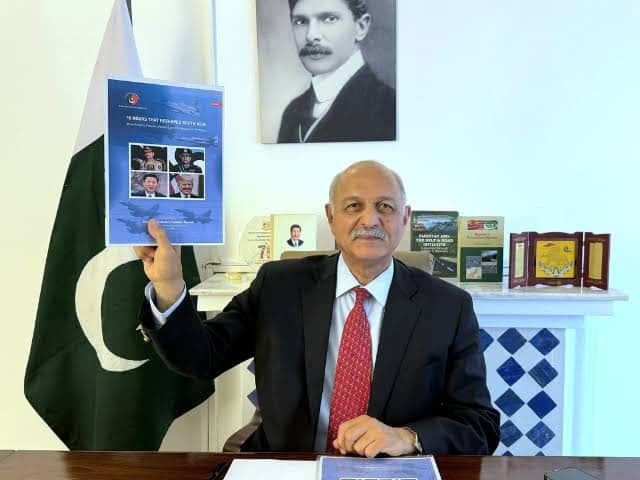A newly released report by the Pakistan-China Institute (PCI) has shed light on what it describes as one of the most defining moments in recent South Asian history—the 2025 standoff between Pakistan and India. The 25-page report, titled “16 Hours that Reshaped South Asia: How Modi’s Miscalculation Led to Pakistan’s Primacy,” positions the confrontation as a landmark episode that reshaped regional dynamics, exposed Indian miscalculations, and reaffirmed Pakistan’s strategic deterrence.
Launched by PCI Chairman Senator Mushahid Hussain Sayed, the report calls the military and diplomatic episode “India’s most serious setback since Prime Minister Nehru’s defeat in the 1962 war with China.” Hussain, who also served as Pakistan’s Information Minister during the 1998 nuclear tests, described the episode as Pakistan’s “finest hour” in over two decades.
According to the report, the sequence of events was triggered by the April 22 terror attack in Pehelgam. It details how the Pakistan Armed Forces, under the leadership of Field Marshal Syed Asim Munir and Air Chief Marshal Zaheer Ahmed Babar, responded swiftly with what the PCI terms “flawless inter-service coordination and strategic clarity.” It particularly credits the Pakistan Air Force (PAF) for its professionalism, technological edge, and combat readiness.
The report highlights Pakistan’s use of advanced electronic warfare systems and cyber capabilities, claiming the country achieved cyber superiority during the 16-hour conflict. Images of JF-17 Thunder and J-10C fighter jets on the cover symbolize what PCI presents as Pakistan’s advanced military capabilities, bolstered further by China’s unwavering diplomatic and strategic support. It emphasizes that under President Xi Jinping, China stood “like a solid rock” beside Pakistan, reflecting Beijing’s evolving role as a stakeholder in South Asian affairs.
Interestingly, the report also acknowledges the role of the United States in de-escalating tensions. Former U.S. President Donald Trump is credited with mediating a ceasefire and reviving international discourse on the Kashmir conflict, a move the report describes as a diplomatic blow to New Delhi.
PCI outlines three lasting strategic outcomes from the episode:
- Restoration of Pakistan’s strategic deterrence.
- China’s emergence as a de facto party to the Kashmir dispute.
- The United States’ role as a stabilizing force in South Asia.
In its concluding sections, the report draws historical parallels, likening Prime Minister Modi’s approach to some of the most notorious strategic errors in history, including Hitler’s ill-fated invasion of the Soviet Union in 1941.
Senator Mushahid Hussain warned that despite the absence of open warfare, India continues to pursue what PCI terms a “3-D strategy” — to demonise, damage, and destabilise Pakistan. He called for unity at home, a healing of political divisions, and sustained vigilance to protect national interests and morale.
The report also puts forward a three-pronged strategy for the future:
- Proactive regional diplomacy,
- Innovative legal measures (termed “creative lawfare”), particularly concerning treaties like the Indus Waters Treaty,
- And global narrative shaping through think tanks, media, and diplomatic forums.
Concluding on a note of national pride, the PCI maintains that this brief yet intense confrontation has strengthened public confidence and rekindled optimism in Pakistan’s future. A detailed timeline, maps, international reactions, and military assessments included in the report further bolster its claims of strategic success and coordinated statecraft.
As tensions continue to simmer in the region, the PCI’s findings are likely to shape both scholarly debate and policy thinking around South Asian security for months to come.


